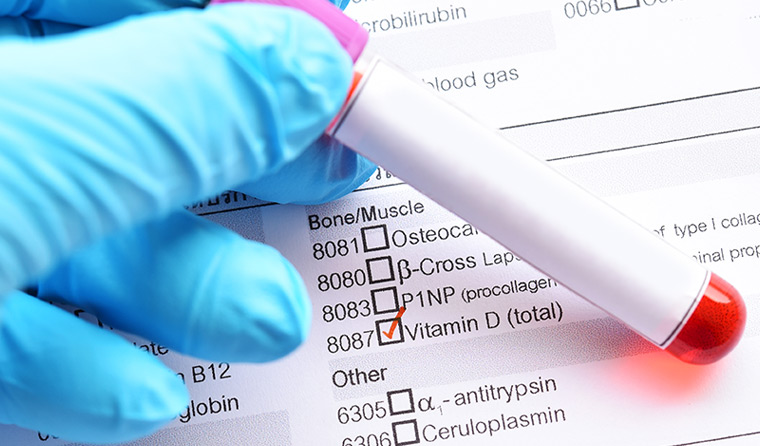News
Testing for vitamin D rises again – at a cost of more than $100 m
And the increase cannot be explained by clinical factors or changes in demographics.
 Associate Professor Louisa Gordon says she is ‘shocked’ to see testing for vitamin D soar again, despite measures being introduced in 2014 to help curb this practice.
Associate Professor Louisa Gordon says she is ‘shocked’ to see testing for vitamin D soar again, despite measures being introduced in 2014 to help curb this practice.
‘We were kind of shocked, because it really is a lot of money.’
That is Senior Research Fellow and health economist Associate Professor Louisa Gordon from QIMR Berghofer Medical Research Institute.
She spoke to newsGP about new research she co-authored that found the number of tests for vitamin D is again on the rise, at a cost to Medicare of $104.7 million.
The observational research, published in the Medical Journal of Australia, looked at data from Medicare item reports and took into account factors such as age and gender.
It found the number of tests for vitamin D deficiency in Australia rose sharply between 2000 and 2011, from 0.4 to 36.5 tests per 1000 population.
The resulting cost to Medicare increased from $1.1 million in 2000 to $95.6 million in 2010. It then peaked at a cost of $151 million in 2012–13.
‘Vitamin D testing was getting out of control, just spiraling up very fast for no really good reason,’ Associate Professor Gordon said.
In a bid to curb the continued rise, she says the government ‘stepped in’ by making changes to Medicare item numbers in November 2014.
This measure initially worked.
‘The testing fell significantly shortly after,’ Associate Professor Gordon said. ‘Over a couple of months it went down by 36%.’
Associate Professor Gordon remained interested in seeing whether the number of tests would rise again.
It did, increasing by 34% between 2015 and 2019 (from 119 to 159 tests per 1000 population).
The cost to Medicare also rose 42% in that time, from $73.7 million to $104.7 million.
‘The testing rate increased in all states,’ the authors of the new research wrote.
‘The rate for women increased by 30% (from 164 to 214 tests per 1000 population), and for men by 40% (from 74 to 105 tests per 1000 population).’
Associate Professor Gordon’s greatest concern is whether testing is being used appropriately to improve patient care.
‘It’s $100 million for this testing, so it’s really important that if there’s going to be such a strong investment in testing that it’s actually going to have benefits and that [testing is happening] for the right people,’ she said.
She is not sure that is the case, as the research only looked at administrative data, and says it could not uncover the reasons testing continues to soar.
‘What we’d like to know is, are GPs looking at the criteria [for vitamin D testing] and following the criteria? Or are they disagreeing with it?’ she said.
‘Do they believe their patients should be tested? Or is it simply that the vitamin D gets ordered with a whole battery of other tests and it’s convenient?
‘It could be just routine ordering for really no strong reason.’
That could be a potential cause for the increase, with the researchers noting the overall uptick in testing since 2015 was not explained by changes in demographic or clinical factors.
‘Further, people who are socio-economically disadvantaged or at particular risk of vitamin D deficiency, including Indigenous Australians, are still tested less frequently than other Australians,’ the authors wrote.
Associate Professor Vicki Kotsirilos is the founding Chair of the RACGP Specific Interests Integrative Medicine network. She told newsGP she is concerned that vitamin D tests and follow-ups are being ordered ‘inappropriately’ in some cases.
‘If we’ve already done one vitamin D test for a patient and perhaps a follow-up test 3–4 months later following supplementation, then once it’s documented and the patient’s lifestyle or their behaviour hasn’t changed, there is no reason to continue testing people,’ she said.
‘So the doctor needs to ask themselves, “Is it appropriate to do [this test]?”’

Associate Professor Vicki Kotsirilos is concerned that vitamin D tests and follow-ups are being ordered ‘inappropriately’ in some cases.
Another reason testing may be so high could relate to patient requests.
Associate Professor Kotsirilos says if one of her patients does not qualify for testing and yet insists on having one, she requests they do so at their own expense.
‘They should do the test at their own cost, not on Medicare,’ she said.
To help curb the rise in vitamin D testing, the authors concluded that patients at clear risk of deficiency could simply be treated – without being tested.
They say this is the financially preferable option, citing cost of supplementation at $2.25 a month. That is far cheaper than testing, they argue, which they say costs $30.05.
‘If you are in a really high-risk group, like women might be from having osteoporosis, for example, there’s really no need to test,’ Associate Professor Gordon said.
‘You can just go straight to a supplement.’
Associate Professor Kotsirilos agrees. Instead of ordering initial or repeat tests on patients, she said low-dose supplementation could be used.
‘We can safely prescribe one or two capsules a day of vitamin D 1000IU and know that you can’t cause toxicity,’ Associate Professor Kotsirilos said.
However, she said individual circumstances need to be taken into account and there are patients who should still be tested.
These include patients with chronic renal failure or those with hypercalcaemia due to metastatic cancer.
‘That’s where we’ve got to be careful,’ Associate Professor Kotsirilos said.
‘That’s when we really should be testing before giving supplements.’
Associate Professor Gordon would like to dive further into this topic to uncover why vitamin D testing continues to rise despite measures to curb this practice.
‘That’s the next step,’ she said.
In the meantime, she hopes this research will help practitioners think twice before simply adding a vitamin D test on when doing routine blood tests.
‘It’s something that’s good to keep track of and to remind doctors to be very careful about what they’re ordering,’ Associate Professor Gordon said.
‘I think people don’t realise how expensive it ends up being, and those resources could be used for so many other purposes.’
Log in below to join the conversation.
deficiency testing vitamin D
newsGP weekly poll
As a GP, do you use any resources or visit a healthcare professional to support your own mental health and wellbeing?